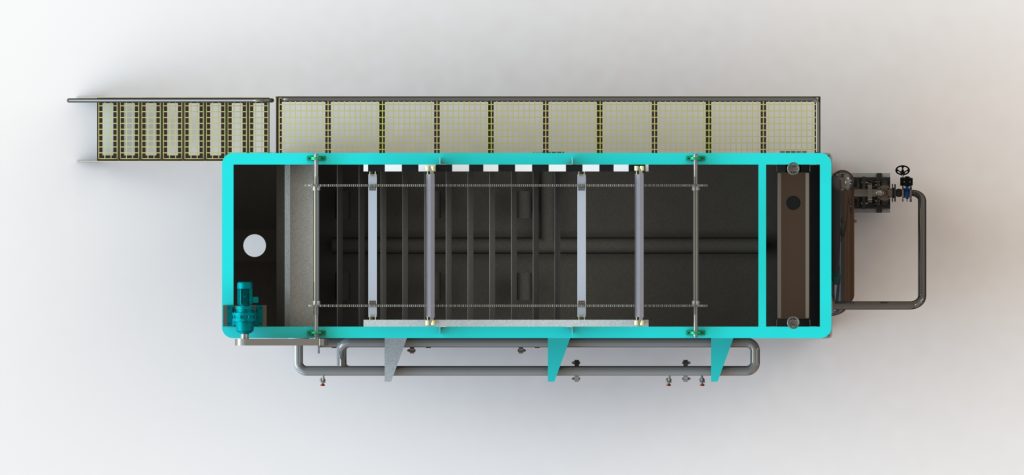What is the difference between coagulants and flocculants?
As we all know, in the water treatment chemicals, the more widely used generally for coagulants and flocculants, namely, polymeric aluminum chloride and polyacrylamide.
Coagulants mainly refer to inorganic ones, such as ferrous sulfate, aluminum sulfate, and flocculants generally refer to organic ones, such as PAC, PAM, and so on.
The process of coagulation is the addition of surface positively charged coagulant to neutralize the negative charge on the surface of the particles, thereby destabilizing them. Flocculation is the process of polymer chains bridging between suspended particulate matter, thereby causing the particulate matter to aggregate. Therefore, coagulants are mostly water-soluble polymers with low molecular weight and high positive charge density, while flocculants are generally polymers with specific electrical properties and charge density.

What is coagulant and flocculant?
The difference between flocculants and coagulants is that they are usually polymers, while coagulants are usually salts. Generally, use anionic flocculants to capture mineral particles, while cationic flocculants can capture organic particles.
Coagulation and flocculation represent two different mechanisms in water treatment.
Coagulation: The particles suspended in water are small enough in particle size that their Brownian motion is energetic sufficient to stop gravity and keep the particles from settling. It can keep pausing in a stable state for a long time. Moreover, the surface of suspended particles often carries electronics (often negatively). The repulsive force of the same charge between the particles makes it difficult for the particles to merge and become larger, thus increasing the stability of the suspension.
The coagulation process is to add a positively charged coagulant to neutralize the negative charge on the surface of the particles so that the particles “destabilization.” Thus, through the collision, the particles, surface adsorption, van der Waals gravity, and other effects, combined to become larger, facilitate the separation from the water.
Coagulants are water-soluble polymers with low molecular weight and high positive charge density, mostly in liquid form. We often divide it into two categories: inorganic and organic. Inorganic coagulants are the primary aluminum and iron salts and their polymers.
Flocculation: Flocculation is the process of polymer chains bridging between suspended particles and particles. The “bridging” is the adsorption of different chain segments on the polymer molecules on other particles to promote the aggregation of particles and particles.
Flocculants are organic polymers, most of which have high molecular weight, specific electrical properties (ionicity), and charge density (ionicity).
What is the difference between coagulant and flocculant?
Depending on the charge and chemical composition of the wastewater, flocculants can be used alone or combined with coagulants. Flocculants differ from coagulants in that they are usually polymers, while coagulants are usually salts.
Coagulation: The colloid in water loses its stability after adding the coagulant, and the colloidal particles united with each other, resulting in the formation of numerous “small alum flowers.”
Flocculation: The “small alum flowers” formed in the coagulation process through adsorption, tape, bridging, and other effects, creating particles more extensive floc process.
Coagulation: It is the general name of two processes of coagulation and flocculation. It is the process of aggregation of colloidal particles and tiny suspended matter in water.
That is to say, “coagulation” includes the whole process. It starts from the initial water injection to water mixing. Then drug reaction (destabilization, flocculation). In addition to the formation of large particles of flocs. And flocculation is one of the stages – when the colloidal particles are destabilized, from forming tiny flocs to form large flocks. Therefore, flocculation is only one step of coagulation!
What is coagulation and flocculation process?
They are using coagulation and flocculation to separate the suspended solid fraction from the water. The suspended particles vary in origin, charge, particle size, shape, and density. Coagulation and flocculation occur in successive steps, allowing for particle collision and floc growth.
Coagulation.
There are a large number of fine suspended and colloidal particles in the wastewater. Due to the influence of Brownian motion, they cannot settle by gravity. So we need to give it a “boost” by adding coagulants to the water. To help them fight against Brownian motion, they can adsorb and combine to form larger particles. The process is called coagulation.
Flocculation.
The suspended particles in the water have become a tiny floc through coagulation, but they are still too small, and the settling speed is not fast enough, so flocculation is needed.
Is alum a coagulant or flocculant?
Flocculant generally refers to alum, known as KAlSO4.12H2O. It can hydrolyze to produce Al(OH)3 colloid that can adsorb impurities in the water to achieve purification effect but cannot remove impurities dissolved in water.
Aluminum sulfate (alum) is the most common coagulant used for water purification. We can also use other chemicals such as iron sulfate or sodium aluminate. Coagulation is usually accomplished in two stages: rapid mixing and slow mixing.
